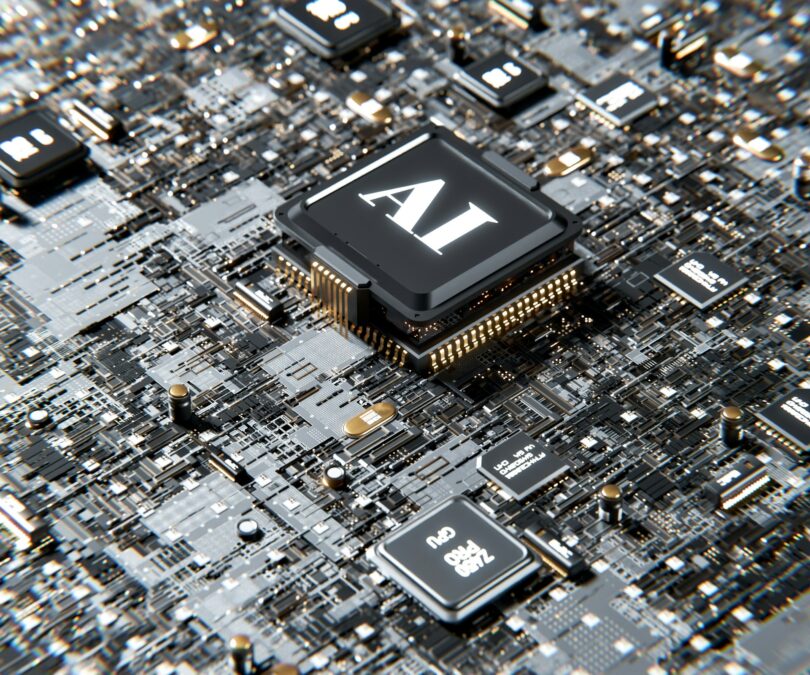How AI Is Changing the World: Positive and Negative Impacts
Artificial Intelligence (AI) has rapidly transformed various aspects of our lives, from automating simple tasks to revolutionizing entire industries. AI has brought significant advancements, improving efficiency, convenience, and innovation. However, as with any powerful technology, AI also has potential downsides that can impact employment, privacy, and even ethical decision-making. This article explores the positive and negative impacts of AI, shedding light on how this revolutionary technology is shaping our world.
Positive Impacts of AI
1. Improved Healthcare and Medical Advancements
AI has made substantial contributions to the healthcare sector by enhancing diagnosis, treatment, and patient care. Some key benefits include:
- Early Disease Detection: AI algorithms can analyze medical images, lab results, and genetic data to detect diseases like cancer at an early stage.
- Personalized Treatment Plans: AI-driven models help doctors develop tailored treatment plans based on individual patient data.
- Robotic Surgery: AI-powered robots assist surgeons in performing complex procedures with greater precision, reducing risks and improving outcomes.
- Drug Discovery: AI speeds up drug development by analyzing vast datasets, helping researchers find potential treatments faster.
2. Enhanced Business Efficiency
AI-driven automation is revolutionizing businesses by increasing efficiency, reducing costs, and improving customer service.
- Chatbots and Virtual Assistants: AI chatbots provide instant customer support, reducing wait times and enhancing user experience.
- Predictive Analytics: Businesses use AI to analyze consumer behavior, enabling better decision-making and targeted marketing strategies.
- Supply Chain Optimization: AI enhances logistics by predicting demand, managing inventory, and optimizing delivery routes.
3. Transformation in Education
AI is reshaping education, making learning more accessible and personalized.
- Smart Tutors: AI-powered tutoring systems help students learn at their own pace, providing customized learning paths.
- Automated Grading: AI assists teachers by automating grading, allowing them to focus on more interactive teaching methods.
- Virtual Classrooms: AI-powered virtual learning platforms enable education in remote areas, bridging the gap between students and quality education.
4. Advancements in Transportation
AI is playing a crucial role in improving transportation systems and road safety.
- Autonomous Vehicles: Self-driving cars use AI to navigate roads, reducing accidents caused by human errors.
- Traffic Management: AI-based traffic control systems optimize signal timing and reduce congestion in urban areas.
- Flight and Shipping Efficiency: AI enhances flight scheduling and logistics, improving fuel efficiency and reducing delays.
5. Environmental Benefits
AI is contributing to sustainability efforts and environmental conservation.
- Climate Change Prediction: AI models analyze climate patterns to predict and mitigate environmental disasters.
- Energy Optimization: AI helps industries reduce energy consumption through smart grids and efficient resource allocation.
- Wildlife Protection: AI-powered drones and surveillance systems monitor endangered species and prevent illegal poaching.
6. Enhanced Security and Fraud Prevention
AI is improving security measures in both the digital and physical worlds.
- Cybersecurity: AI detects and prevents cyber threats by identifying suspicious activities in real-time.
- Fraud Detection: Banks and financial institutions use AI to detect fraudulent transactions and protect users from financial scams.
- Surveillance Systems: AI-powered facial recognition and monitoring systems enhance public safety and crime prevention.
Read More: The Biggest Achievements of Technology in India
Negative Impacts of AI
1. Job Displacement and Unemployment
AI-driven automation is replacing many traditional jobs, leading to concerns about unemployment.
- Manufacturing Jobs: Robots and AI-powered machines are replacing factory workers in repetitive tasks.
- Customer Service: AI chatbots reduce the need for human customer support representatives.
- Data Processing Roles: AI automates data entry, reducing the demand for human workers in administrative roles.
- Need for Reskilling: Many workers need to learn new skills to remain employable in an AI-driven world.
2. Ethical Concerns and Bias
AI systems may unintentionally promote bias, leading to ethical challenges.
- Algorithmic Bias: AI models trained on biased data may discriminate against certain groups in hiring, lending, or law enforcement.
- Privacy Invasion: AI-powered surveillance raises concerns about individual privacy and data misuse.
- Autonomous Decision-Making: AI systems in criminal justice and healthcare may make critical decisions without human oversight, leading to ethical dilemmas.
3. Security Risks and Cyber Threats
While AI enhances security, it also poses new risks in cybersecurity.
- Deepfakes and Misinformation: AI-generated fake videos and news can manipulate public opinion and spread false information.
- AI-Powered Hacking: Cybercriminals use AI to develop more sophisticated hacking techniques, making cyberattacks harder to detect.
- Autonomous Weapons: The development of AI-powered military weapons raises concerns about unintended conflicts and ethical warfare.
4. Lack of Human Touch in Services
AI-driven automation reduces human interaction in various fields.
- Healthcare: AI diagnosis and virtual consultations may lack the empathy of human doctors.
- Education: AI tutors cannot fully replace the guidance and mentorship of human teachers.
- Customer Service: While AI chatbots are efficient, they may not handle complex emotional situations effectively.
5. Dependence on AI and Technological Unemployment
Over-reliance on AI could create issues in case of technical failures or system vulnerabilities.
- Automation Failures: AI errors in automated systems can lead to critical failures in industries like healthcare, aviation, and finance.
- Skill Erosion: As AI takes over decision-making, human cognitive skills may decline, reducing innovation and problem-solving abilities.
- AI Control Risks: The risk of AI systems operating beyond human control raises concerns about unintended consequences.
Balancing AI’s Impact: The Way Forward
To maximize AI’s benefits while mitigating its risks, a balanced approach is necessary.
1. Regulations and Ethical AI Development
Governments and organizations should establish clear policies to ensure responsible AI use.
- AI Governance Frameworks: Creating ethical guidelines for AI development to prevent bias and discrimination.
- Transparency and Accountability: Ensuring AI decisions are explainable and monitored by human oversight.
- Privacy Protection: Strengthening data privacy laws to prevent misuse of personal information.
2. Reskilling and Workforce Adaptation
Educational institutions and businesses must help workers adapt to AI-driven changes.
- Upskilling Programs: Providing training in AI-related skills to help workers transition to new roles.
- Lifelong Learning Initiatives: Encouraging continuous education to stay updated with technological advancements.
- Human-AI Collaboration: Promoting jobs where humans and AI work together rather than replacing each other.
3. Public Awareness and AI Literacy
Raising awareness about AI’s potential and risks is crucial.
- Educational Campaigns: Teaching AI literacy in schools and universities.
- Transparency in AI Usage: Informing users about AI-driven decision-making in various sectors.
- Encouraging Ethical AI Research: Supporting research in AI ethics to create fair and unbiased AI systems.
Conclusion
AI is a double-edged sword, offering tremendous benefits while posing significant challenges. It has revolutionized healthcare, business, education, transportation, and security, but it also raises concerns about job displacement, ethical dilemmas, and cybersecurity threats. By implementing ethical guidelines, investing in education, and promoting responsible AI usage, society can harness AI’s potential while mitigating its risks. The key lies in balancing innovation with responsibility to ensure AI serves humanity positively in the long run.

